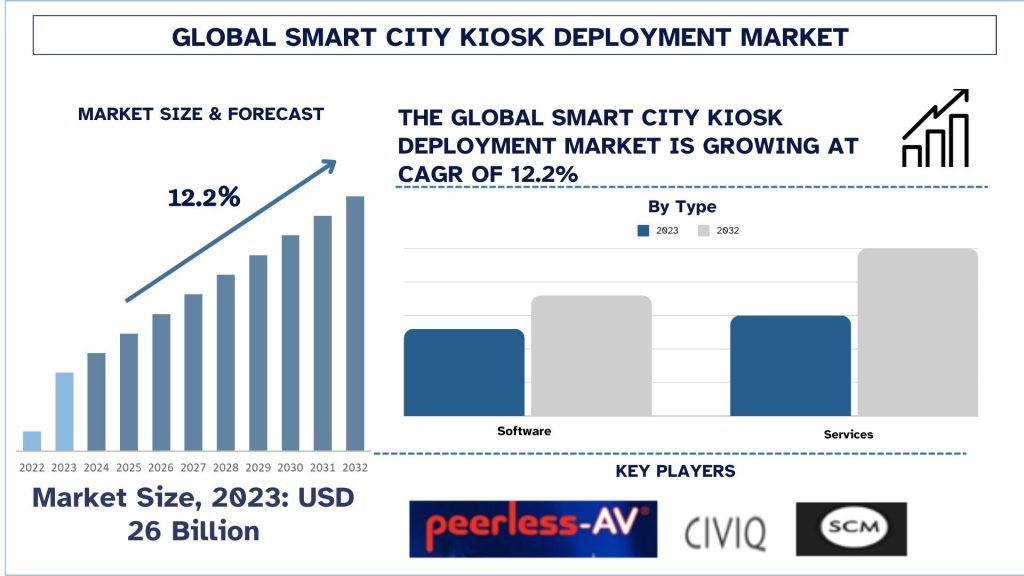智慧城市自助服务终端部署市场规模与预测
智慧城市自助服务终端部署市场拥有充满希望的潜力,在预测期内复合年增长率为 12.2%,实现指数级加速。全球许多政府继续参与智慧城市项目,以提高公共服务质量和城市效率。因此,智慧城市自助服务终端是城市发展战略的一部分,其中资金计划和监管支持是实施智慧城市自助服务终端的关键。此外,智慧城市自助服务终端可以被视为智能环境的组成部分,该环境包括物联网设备、智能电网和自动驾驶汽车。这种集成使人们可以与这些技术进行交互和共享数据,从而加强城市及其资源供应的运营。
智慧城市自助服务终端部署市场分析
智慧城市自助服务终端的部署涉及在城市环境中实施交互式数字自助服务终端,以增强连接性、提供信息、提供服务和吸引市民。这些自助服务终端通常集成触摸屏、传感器、摄像头和无线连接技术,以促进各种功能,从寻路和公共安全警报到交互式地图和数字交易。
智慧城市自助服务终端部署市场细分洞察
- 基于类型划分的智慧城市自助服务终端部署市场包括软件和服务。软件部门在 2023 年引领市场。软件部门在智慧城市自助服务终端部署市场中的主导地位可归因于对先进软件解决方案日益增长的需求,这些解决方案能够开发用于智慧城市的自助服务终端。这些包括交互元素、实时数据处理、安全措施以及与其他智慧城市系统的集成。示例:当前的软件解决方案根据用户请求提供量身定制的信息。例如,英特尔和微软正在为智慧城市开发智能自助服务终端,这些自助服务终端具有交互元素和大数据分析功能,可以更深入地了解城市流程。
- 根据应用,智慧城市自助服务终端部署市场已分为 BFSI、零售、媒体和娱乐、交通运输、食品和饮料以及其他。BFSI 部门在 2023 年引领市场。在 BFSI 的背景下,由于安全、隐私和客户服务,智能城市自助服务终端被早期采用。BFSI 环境中的智慧城市自助服务终端包括执行与 ATM 相关的服务、帐户信息、贷款处理和客户服务。示例:美国银行(如摩根大通和富国银行)已安装智慧城市自助服务终端,以解决各种银行服务,例如支票存款和账户余额。这些自助服务终端为客户提供了服务交付的扩展,并有助于降低分支机构的运营费用。
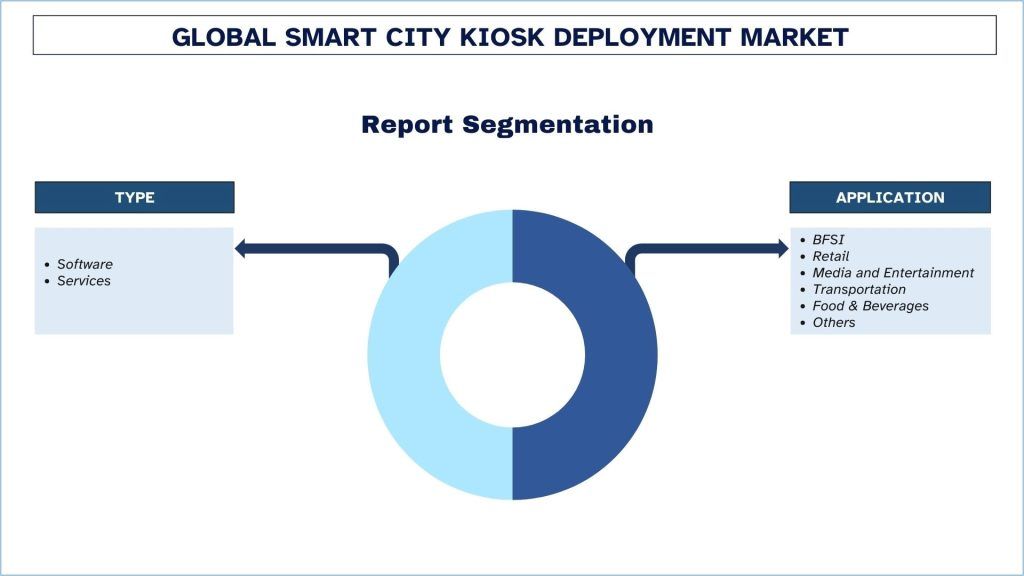
北美在 2023 年占据了市场的主导份额
北美的一些城市已经启动了智慧城市项目,旨在提高公民的生活水平并开发更好的公共服务。这些举措要求使用智慧城市自助服务终端,因为这些结构可以为公民和游客提供有关交通、紧急情况、旅游等方面的相关信息、服务和设施。此外,北美的人口密度很高,并且集中在纽约、洛杉矶、多伦多和芝加哥等大城市中。智慧城市自助服务终端在这种情况下非常方便,因为它们可以缓解交通拥堵并确保个人安全以及城市的整体组织效率。
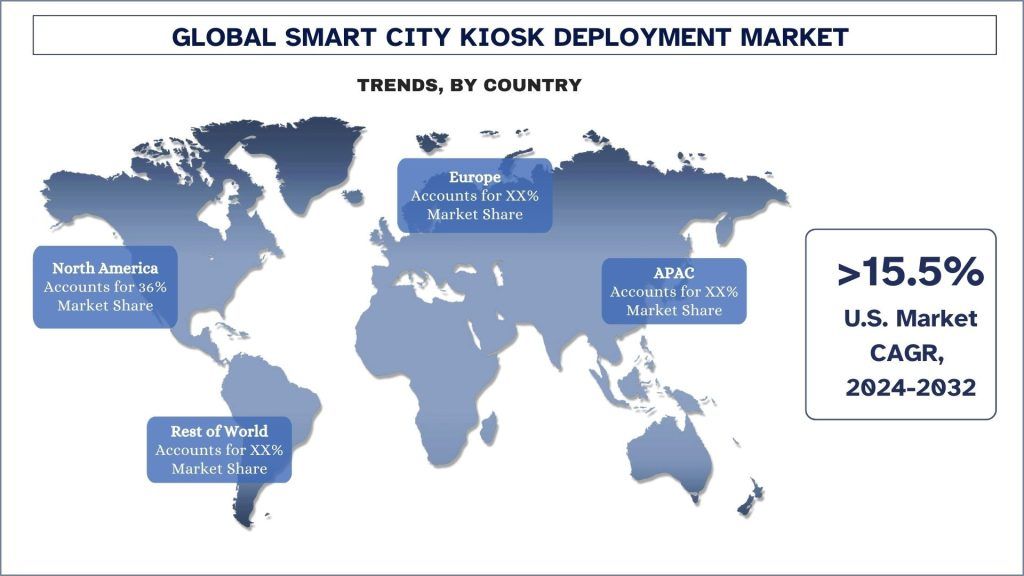
智慧城市自助服务终端部署行业概览
智慧城市自助服务终端部署市场竞争激烈且分散,有几家全球和国际参与者。主要参与者正在采取不同的增长战略来增强其市场影响力,例如合作伙伴关系、协议、合作、新产品发布、地域扩张以及并购。市场上的主要参与者包括 Peerless A.V.、CIVIQ Smartscapes LLC、Smart City Media、smartLINK、Soofa, Inc.、Intel Corporation、Ferrograph Ltd.、Verizon Communications Inc.、Smart City Holdings, LLC 和 OLEA Kiosks Inc.。
智慧城市自助服务终端部署市场新闻
- 像首尔和纽约市这样的城市正在启动试点项目,以在高流量区域和公共场所测试支持 5G 的自助服务终端。这些举措旨在展示 5G 在改善城市连接和增强用户体验方面的潜力。
- 巴塞罗那在 2023 年在智能公园推出了交互式自助服务终端,以促进可持续性和社区参与。这些自助服务终端提供有关公园设施、环境数据、文化活动和安全提示的信息。它们是巴塞罗那通过数字技术改善公共空间和促进居民社区的努力的一部分。
智慧城市自助服务终端部署市场报告覆盖范围
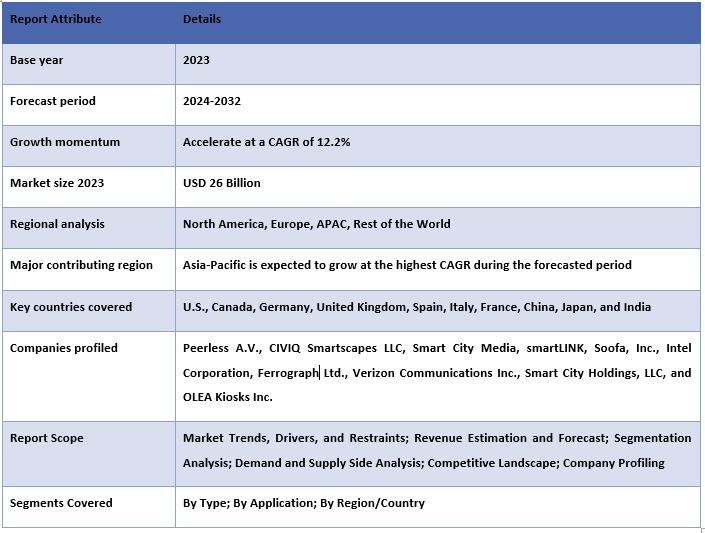
购买本报告的理由:
- 该研究包括经过认证的关键行业专家验证的市场规模和预测分析。
- 该报告简要回顾了一目了然的整体行业绩效。
- 该报告涵盖了对主要行业同行深入分析,主要侧重于关键业务财务、产品组合、扩张战略和最新发展。
- 详细分析了行业中普遍存在的驱动因素、限制因素、关键趋势和机遇。
- 该研究全面涵盖了跨不同细分市场的市场。
- 深入分析了该行业的区域层面。
定制选项:
全球智慧城市自助服务终端部署市场可以根据要求或任何其他细分市场进行定制。除此之外,UMI 了解您可能拥有自己的业务需求;因此,请随时与我们联系以获取完全符合您要求的报告。
目录
智能城市信息亭部署市场分析(2024-2032F)的研究方法
分析历史市场、估算当前市场以及预测全球智能城市信息亭部署市场的未来市场,是创建和分析全球主要地区智能城市信息亭部署采用情况的三个主要步骤。 我们进行了详尽的二级研究,以收集历史市场数据并估算当前的市场规模。 其次,为了验证这些见解,我们考虑了许多发现和假设。 此外,我们还与全球智能城市信息亭部署市场价值链上的行业专家进行了详尽的初步访谈。 通过初步访谈对市场数据进行假设和验证后,我们采用自上而下/自下而上的方法来预测完整的市场规模。 之后,采用市场细分和数据三角剖分方法来估算和分析与行业相关的细分市场和子细分市场的市场规模。 详细的方法如下所述:
历史市场规模分析
步骤 1:深入研究二级来源:
我们进行了详细的二级研究,通过公司内部来源(例如年度报告和财务报表、绩效演示文稿、新闻稿等)以及外部来源(包括期刊、新闻和文章、政府出版物、竞争对手出版物、部门报告、第三方数据库和其他可靠的出版物)来获取智能城市信息亭部署市场的历史市场规模。
步骤 2:市场细分:
在获得智能城市信息亭部署市场的历史市场规模后,我们进行了详细的二级分析,以收集主要区域不同细分市场和子细分市场的历史市场见解和份额。 报告中包含的主要细分市场包括类型和应用。 此外,我们还进行了国家/地区层面的分析,以评估总体采用情况。
步骤 3:因素分析:
在获得不同细分市场和子细分市场的历史市场规模后,我们进行了详细的因素分析,以估算智能城市信息亭部署市场的当前市场规模。 此外,我们使用智能城市信息亭部署市场的类型和应用等因变量和自变量进行了因素分析。 考虑到全球智能城市信息亭部署市场领域的顶级合作伙伴关系、并购、业务扩张和产品发布,我们对需求和供应方情景进行了彻底的分析。
当前市场规模估算和预测
当前市场规模:基于以上 3 个步骤的可操作见解,我们得出了当前的全球智能城市信息亭部署市场规模、主要参与者以及细分市场的市场份额。 所有必需的百分比份额划分和市场细分均使用上述二级方法确定,并通过初步访谈进行了验证。
估算与预测:对于市场估算和预测,我们为不同的因素分配了权重,包括驱动因素和趋势、限制以及利益相关者可用的机会。 在分析这些因素后,我们应用了相关的预测技术,即自上而下/自下而上的方法,以得出 2032 年全球主要市场不同细分市场和子细分市场的市场预测。 用于估算市场规模的研究方法包括:
- 该行业的市场规模(按收入(美元)计算)以及国内主要市场智能城市信息亭部署市场的采用率
- 市场细分和子细分的全部百分比份额、划分和细分
- 全球智能城市信息亭部署市场中,就所提供的产品而言的主要参与者。 此外,这些参与者为在快速增长的市场中竞争而采取的增长策略
市场规模和份额验证
主要研究:与主要地区的高层管理人员(CXO/VP、销售主管、营销主管、运营主管、区域主管、国家/地区主管等)等关键意见领袖 (KOL) 进行了深入访谈。 然后总结主要研究结果,并进行统计分析以证明所述假设。 主要研究的输入与二级研究结果相结合,从而将信息转化为可操作的见解。
不同地区主要参与者的分布
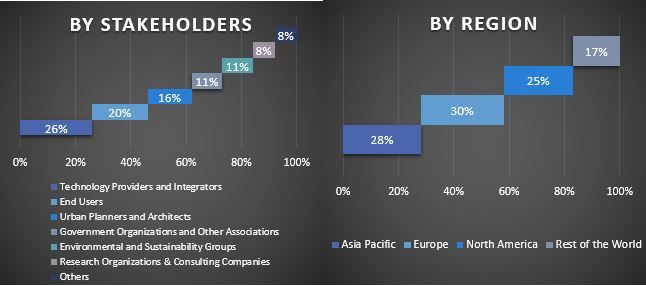
市场工程
采用数据三角剖分技术来完成整体市场估算,并得出全球智能城市信息亭部署市场每个细分市场和子细分市场的精确统计数字。 在研究了类型和应用领域的各种参数和趋势后,将数据分为几个细分市场和子细分市场。
全球智能城市信息亭部署市场研究的主要目标
该研究指出了全球智能城市信息亭部署市场的当前和未来市场趋势。 投资者可以获得战略见解,以根据研究中进行的定性和定量分析来决定投资。 当前和未来的市场趋势决定了市场在区域层面的总体吸引力,为行业参与者提供了一个利用未开发市场以受益于先行者优势的平台。 该研究的其他定量目标包括:
- 分析智能城市信息亭部署市场的当前和预测市场规模(按价值(美元)计算)。 此外,分析不同细分市场和子细分市场的当前和预测市场规模。
- 研究中的细分市场包括类型和应用领域。
- 定义和分析智能城市信息亭部署的监管框架
- 分析涉及各种中介机构的价值链,同时分析行业的客户和竞争对手行为。
- 分析主要区域智能城市信息亭部署市场的当前和预测市场规模。
- 报告中研究的区域的主要国家包括亚太地区、欧洲、北美和世界其他地区
- 智能城市信息亭部署公司的概况以及市场参与者为在快速增长的市场中保持竞争力而采取的增长策略
- 深入的行业区域层面分析
常见问题 常见问题
Q1:智慧城市自助服务终端部署市场目前的市场规模和增长潜力是多少?
Q2:智能城市自助服务终端部署市场增长的驱动因素有哪些?
Q3:按类型划分,智慧城市自助服务终端部署市场中哪个细分市场份额最大?
Q4:智能城市自助服务终端部署市场中涌现的新兴技术和趋势有哪些?
Q5:哪个地区将在智慧城市自助服务终端部署市场占据主导地位?
相关 报告
购买此商品的客户也购买了

